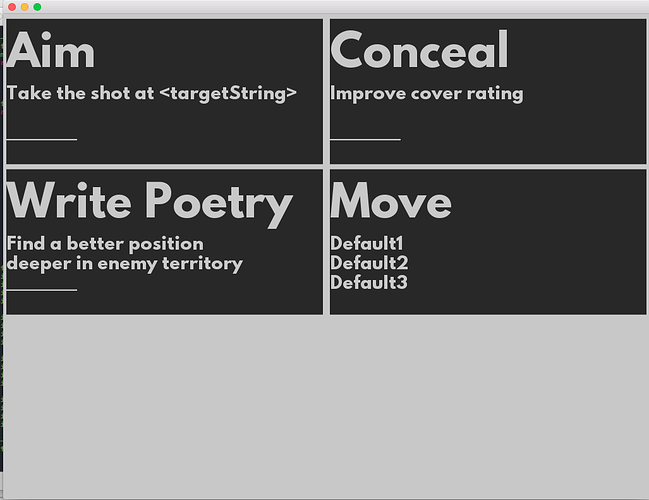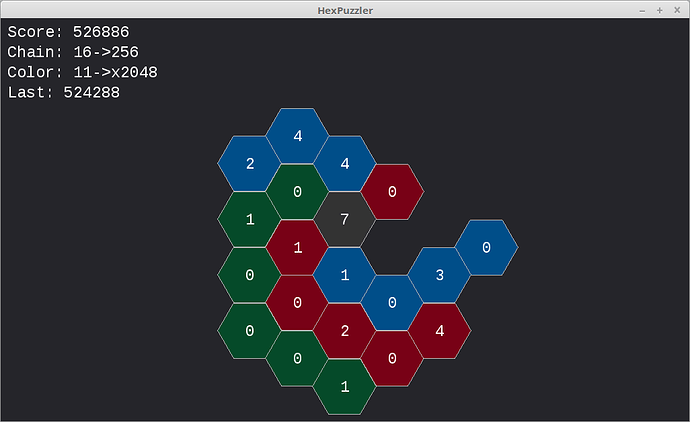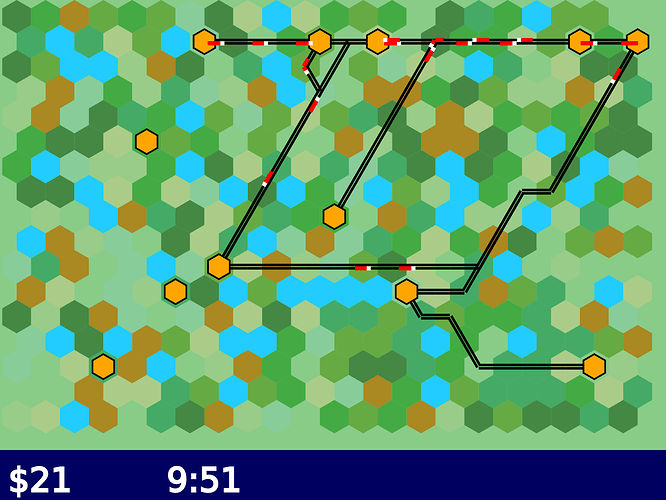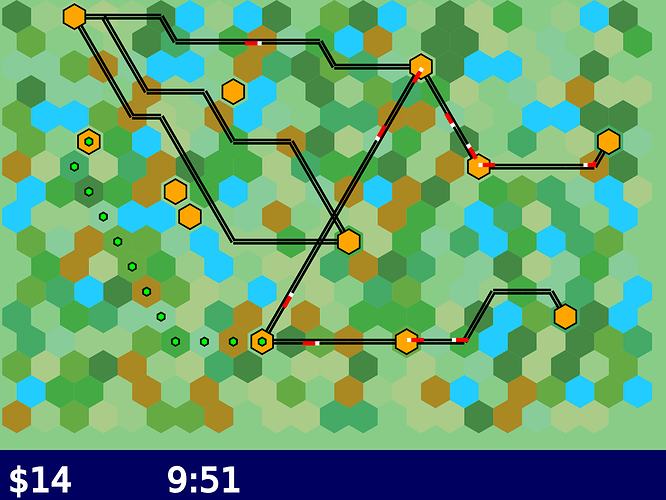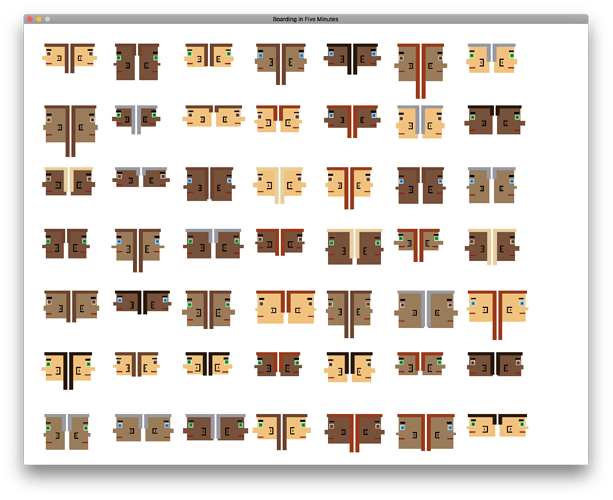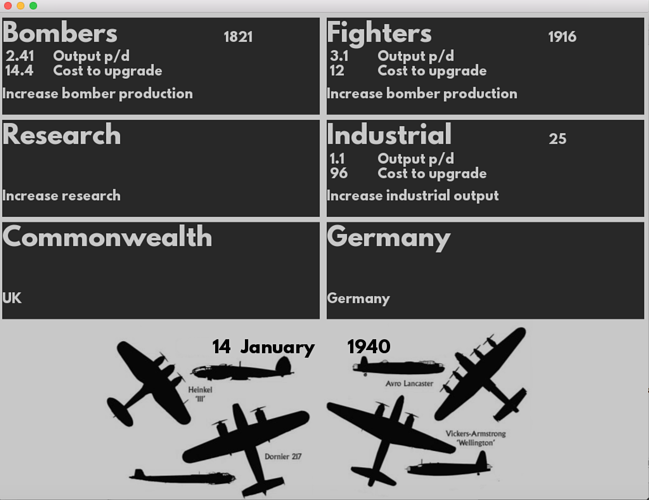That’s cool. I’m currently refactoring some python code I wrote 4 months ago and having a hard time concentrating. It makes me sad that python never really caught on as the scripting language for any of the larger/popular game engines. I guess Godot has a python-esque language, but it seems that most went lua, javascript, C#, or something else.
There are a few Python-based engines around - Panda3D being the largest one - but yeah, Python is not exactly ideal for game scripting/embedding for a variety of reasons. It’s kind of sad, but understandable.
I am working on a concept
The Sniper, his poetry and true love.
A game about a ww2 era sniper who juggles three needs
1.) To survive the war in a fairly detailed sniper sim
2.) Write poetry and submit it for publication
3.) Exchange love letters with his sweetheart back home
Each of the three activities essentially revolves around “picking your moment” from the right level of inspiration to pulling the trigger to popping a marriage proposal.
Visually i want the whole game to feel data visualization(ish)
Right now I am working on the GUI/Datavis system
Anyway I am going to give it through Sunday to see if this idea sticks. If not I will drop it and go with another concept I have in mind.
Made a small test program, just to get started: http://snellman.net/tmp/10min/
One thing that occurred to me after writing the design doc was that maybe constraining the game to a hex map makes no sense, and it’d be a lot simpler to just use straight point to point connections. This test has me fairly convinced that hexes will be the way to go. Straight tracks between cities will just be too messy.
I like the hex idea. What you have in place is reminiscent of Mini Metro. I think the time constraint will be good for your idea, especially when trying to maximize efficiency within the constraint.
I couldn’t quite picture the hex layout but that’s looking great. Definite Mini Metro vibe, which is a good thing.
GitHub is down. Like all of it. F’ing unicorns. I have docs to read!
Ooooo… I’m in for this as long as there are not deadlines or anything. Because I’m awful at deadlines for stuff like this. Really I’m just planning on siphoning up all of your progress into a drip-feed of inspiration and living vicariously, so make something good :P
I’ve been playing Fallen London again and I’m still enamored with idlegames like SPACEPLAN, so I’d like to make something text-oriented. I’ll have to give the whole “ten minute game” thing more thought though to find a good idea that’s not just an arbitrary timer on a longer game.
Working on @Dave_Perkins’ concept. It’s coming along nicely. My wife and her brother have been playing all afternoon. The mechanics are all there, but I think we’re still going to do one more revision on the scoring before we put it somewhere as an entry. (I just saw a score of 236 million, which is just a bit on the excessive side.)
This guy also has a lot of free art assets for games: http://kenney.nl/assets
My week was busy and I didn’t get a chance to start working on this until a few hours ago. I decided to go with LÖVE 2D because I’ve heard a lot of good things about it for rapid prototyping and never have written any Lua code. Supposedly, this community contribution is a web player for LÖVE 2D games. If that doesn’t work – well, that’s the big downside to going with this engine.
Lua is super simple! If anybody is interested in LÖVE 2D, this guide will get you up and running in minutes. I found it helpful for pointing out “class” syntax that can be used with a simple library, etc. Hope to have something to show soon.
@mtthwcmpbll There’s no due date or anything. The only constraint is that you can play the whole game in ten minutes, but that’s not even a hard constraint. I just find that sometimes it is easier to come up with interesting ideas where there’s some type of constraint.
LOVE 2D looks neat! Sorta wished I had researched it before starting.
Yeah, I used LÖVE in the past and it’s pretty cool indeed. I suppose there are good libraries/options nowadays for GUI and state management too, which makes it even better.
What did you end up going with?
Sounds like I should play Mini Metro, just to make sure I don’t end up with something too similar to it. A bit of progress:
- Expose the hex grid structure. The terrain is totally random, and purely decorative except for the lakes (which block track building)
- Pathfinding algorithm for building shortest track between two cities, finding shortest route between two cities for a train.
- Trains with carriages (unnecessary, but a single-element train making a turn looked way too stupid). But that makes me wonder whether having different size trains could be an interesting mechanic at some later point.
- Traffic jams. The track segments always go between two hex centers, and each track segment can just have one train on it (tracked for the length of a whole train, so in practice there will always be at least one full hex length between any two trains traveling in the same direction).
- Clicking on a city builds up the track building mode, which shows a preview of the path the track would take.
I think getting an economy system going will be the next thing. That’ll involve three parts:
- Costs for track building
- Setting up shipments
- The loan mechanisms
That should be enough to figure out how much of an actual game there is to this.
I’m messing with the idea of the units of the crowds being a resource you spend to do cool things. Here’s a transform animation of 10 of them turning into a spawner, which then generates more units:

Next I’m planning on experimenting with different unit types which have different speeds and crowd parameters to see how it affects the feeling of moving the crowd. Hopefully that’ll be enough for the skeleton of the game.
I’m pretty deep into Unity because I’ve been working in it professionally for around 5 years now. I really need branch out more, though, and a game jam seems like a great chance to do that.
That pop with the particle effects looks pretty satisfying.
Reminds me a bit of the idea of Badland on iOS. You fly a swarm, and the swarm is also a puzzle solving tool/ resource to spend.
I finally found a bit of time to do some coding. I’ve settled on the idea of a game where you have to sort out the people waiting to board an airplane. Make sure they aren’t carrying bags that are too big, get them in the proper boarding zones when they wander out, and try to board the plane as efficiently as possible so as to depart on time. I’m calling the concept “Boarding in Five Minutes.”
Anywho… in playing with LOVE2D and Lua, it took me a short while to figure out some of the syntax and the nutty business with tables and 1-based indexes. I’m a fan of procedurally generated stuff in games, so instead of drawing graphics for the concept, I’m going to generate them all in code using the LOVE2D love.graphics API. It’s surprisingly robust – sort of reminds me of simple parts of Processing.
Anyhow, I quickly created a random head generator for passengers. As they mill about, they may face either left or right, so I made this view to compare how they look when facing either direction. I need to adjust skin tones, hair colors, add more hair styles, etc… and then, of course, make simple bodies for them. For now, though, here are two screenshots of procedurally generated heads.
The great thing about Lua and LOVE2D is that it feel so… light. The barrier to entry for starting to prototype in LOVE2D is lower than any other game engine I’ve tried (if you’re ok without a GUI for creating scenes, etc.). I’ve never latched onto GUI-driven game engines and really enjoy LOVE for it’s simplicity and ease of use with a code-driven approach.
More updates soon, I hope. I need to create a schedule to work on this 2 hrs/night or something.
Edit: oh, yeah… the code is over here. It’s still riddled with the example code from the tutorial I skimmed. https://github.com/clayheaton/boarding_in_five_minutes
I am enjoying follow evryone’s progress! Good stuff!
Mine did indeed change tack after my son told me a sniper sim about writing poetry and proposing to his sweetheart was “not your best dad”. I also really had a great time with Spaceplan yesterday (thanks for the link mttwcpll !)
So I kept the same UI stuff as I want the data vis vibe and made it an incremental/war game about aircraft production in WW2. Particularly I was rather taken aback by just how many aircraft were made/destroyed in WW2 but also the story of the shadow factories like the legendary Castle Bromwich which made Spitfires. The war lasts 10 minutes from 1939 to 1945 and as each day ticks by you will manage the War Production for the UK as the war develops based on your decisions.
Anyway the basic economy is there ticking away and you can spend & increase production right now. Next to add in more of the core gameplay and the warsim which will be going in the background.
Awesome.
What does he know, Sniper poetry is the best poetry. Of course with your factory game you can just go off the rails and turn it into a idle game, flooding the world with under utilized air capacity.
I got a dude walking around in Stencyl!
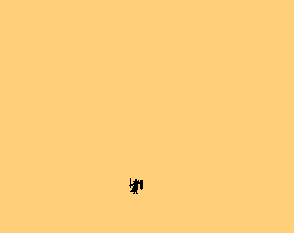
I like the idea of Stencyl, and Gamemaker for that matter. Being able to stitch together code blocks that provide nice guidance along the way makes it a lot easier for someone like me with no coding experience to put things together without having to learn the actual syntax at the same time.
